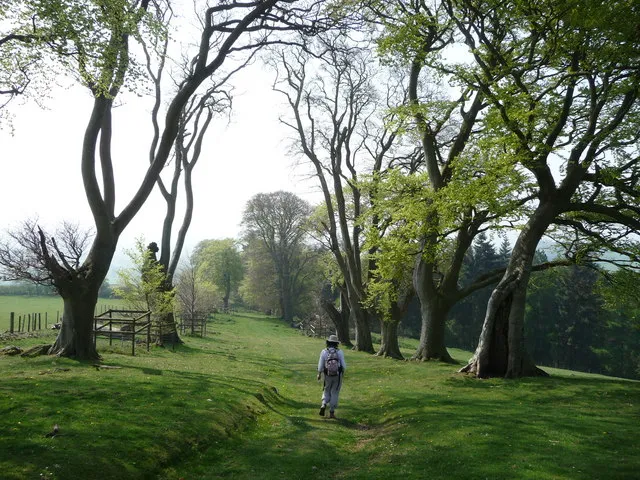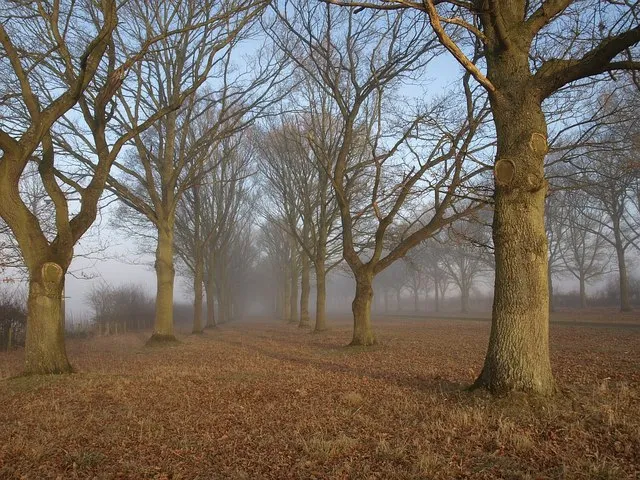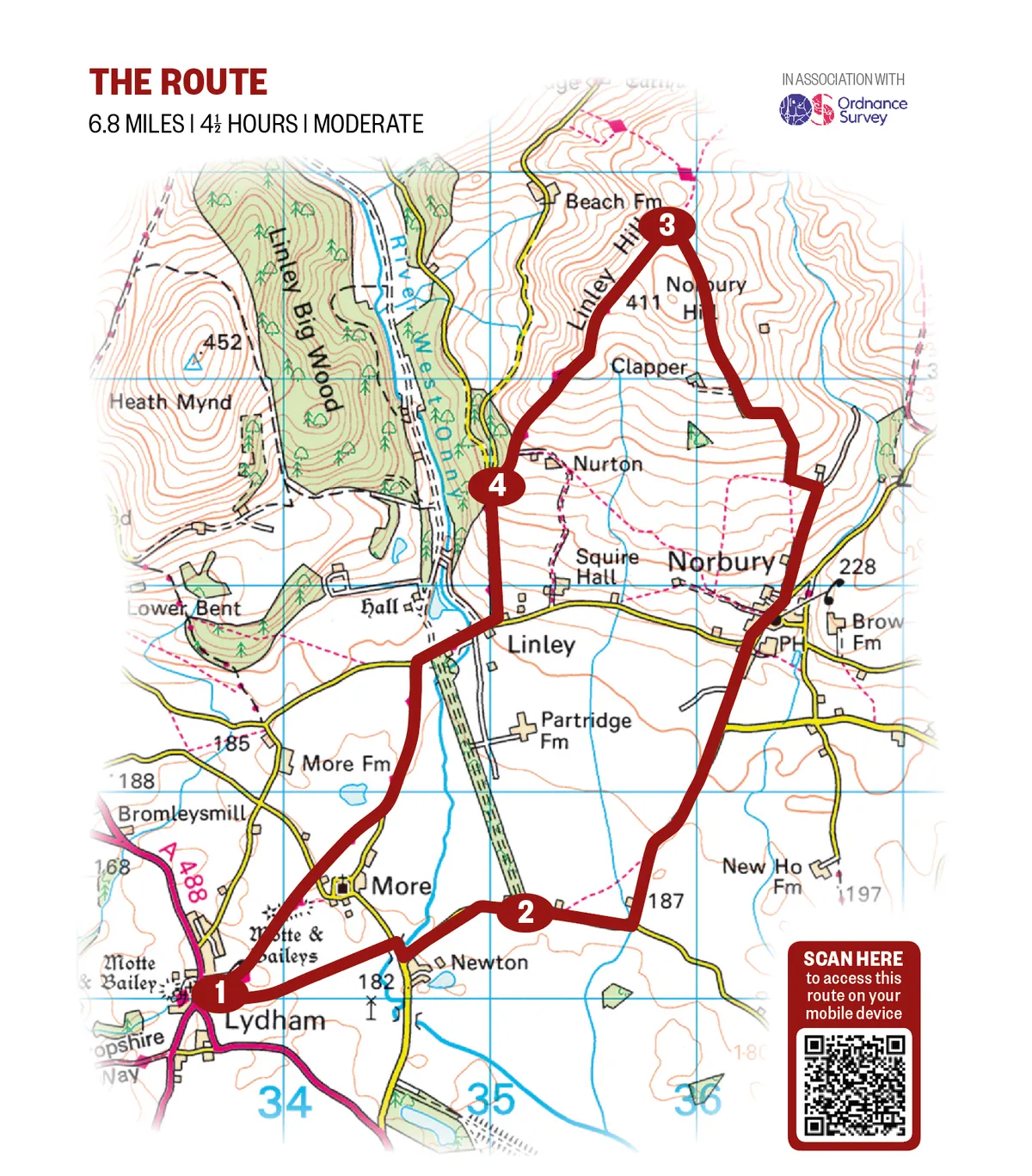Lean against a Linley Beech and you lean against the vision of Robert More, MP for Bishop’s Castle and later Shrewsbury, in the mid-18th century. The tree-loving MP and explorer (he’s credited with introducing the larch to England) had this mile-long double row of beech trees planted on Shropshire’s Linley Hill.
Surrounded by the Long Mynd, the Stiperstones and Corndon Hill, they march like soldiers down towards More’s family home at Linley Hall. This, and other arboreal adventures, can be found in this secret slice of the Shropshire countryside.

Double Oaks
From Lydham Village Hall car park, a stream-side path cuts across fields to a minor road near Newton Farm, where a lane heads towards Norbury. At Avenue Lodge, a mile-long private drive stretches towards Linley Hall, commissioned by Robert More in 1742 and lined on both sides by a double-row of palatial oak trees. Sadly, these are not More’s originals, for they were felled for the war effort in 1916. Today’s oaks date from 1937, but they are mature enough to reveal More’s vision for his Shropshire home.
“Sit at the beeches’ feet and let the wind whisper their story”
Ancient Yew
From here, it’s a 2km wander to Norbury. In the centre of the small village is the All Saints Church, home to one of the oldest trees in Shropshire. The churchyard yew has a girth of more than 10m and is thought to be over 2,700 years old.
Take the minor lane to the left of Norbury’s red telephone box, then the next left, and begin the leisurely 2.3km amble towards Linley Hill’s 397m summit.
Beech Battalion
Turn left on to the waymarked Shropshire Way, descending between More’s magnificent beeches. They stand like sentinels, guarding what was once an important trading route, some 6,000 years ago, between the mines at the nearby Stiperstones and a settlement on the site of the modern market town of Bishop’s Castle.

Sit at these soldiers’ feet and let the wind whisper their story to you, as it rustles through their autumn-fading leaves. They are almost 300 years old, a maturity made visible by the discarded limbs that litter the ground, and the dinner-plate-sized bracket fungi thriving on them.
New recruits were planted among these old soldiers in the 1990s to keep Robert More’s iconic living sculpture alive.
When the Shropshire Way meets a small leafy lane, take a left and descend between hedgerows for 500m to a slightly larger road. Here, turn right to pass the top end of Linley Hall’s oak avenue, then left at waymarkers, skirting the hamlet that takes More’s name. As you return to Lydham, look over your shoulder to More’s majestic beeches: resolute relics, soldiering on towards their fourth century.
Map
Click on the OS map below to get a free interactive version of the route.

Main image ©Shropshire and Beyond

